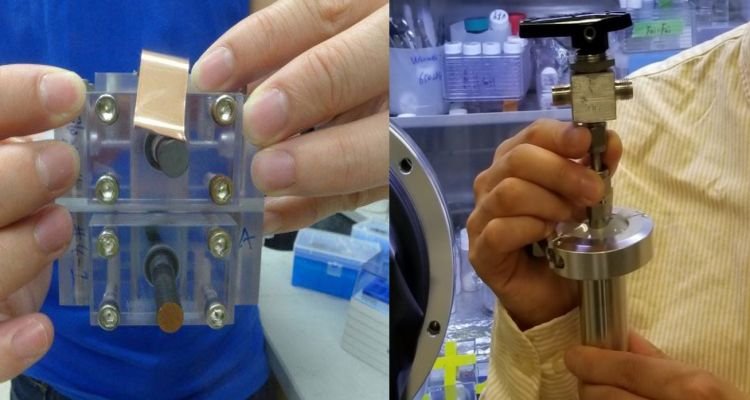The prototype manganese-hydrogen battery stands just three inches tall and generates a mere 20 milliwatt hours of electricity, which is on par with the energy levels of LED flashlights that hang on a key ring.
Despite the prototype’s diminutive output, the researchers are confident they can scale up this table-top technology to an industrial-grade system that could charge and recharge up to 10,000 times, creating a grid-scale battery with a useful lifespan well in excess of a decade.
What new has been attempted is throwing a special salt into water, dropped in an electrode, and created a reversible chemical reaction that stores electrons in the form of hydrogen gas. The researchers have essentially coaxed a reversible electron-exchange between water and manganese sulfate, a cheap, abundant industrial salt used to make dry cell batteries and other products.
To mimic how a wind or solar source might feed power into the battery the researchers attached a power source to the prototype. The electrons flowing in reacted with the manganese sulfate leaving particles of manganese dioxide clinging to the electrodes.
Excess electrons bubbled off as hydrogen gas storing that energy for future use. Engineers know how to re-create electricity from the energy stored in hydrogen gas so the important next step was to prove that the water-based battery can be recharged.
They did this by re-attaching their power source to the depleted prototype, this time with the goal of inducing the manganese dioxide particles clinging to the electrode to combine with water, replenishing the manganese sulfate salt. Once this salt was restored, incoming electrons became surplus, and excess power could bubble off as hydrogen gas, in a process that can be repeated again and again and again.
We feel grid-scale storage has to be low-cost, high-capacity and rechargeable. The manganese-hydrogen process seems very promising.






